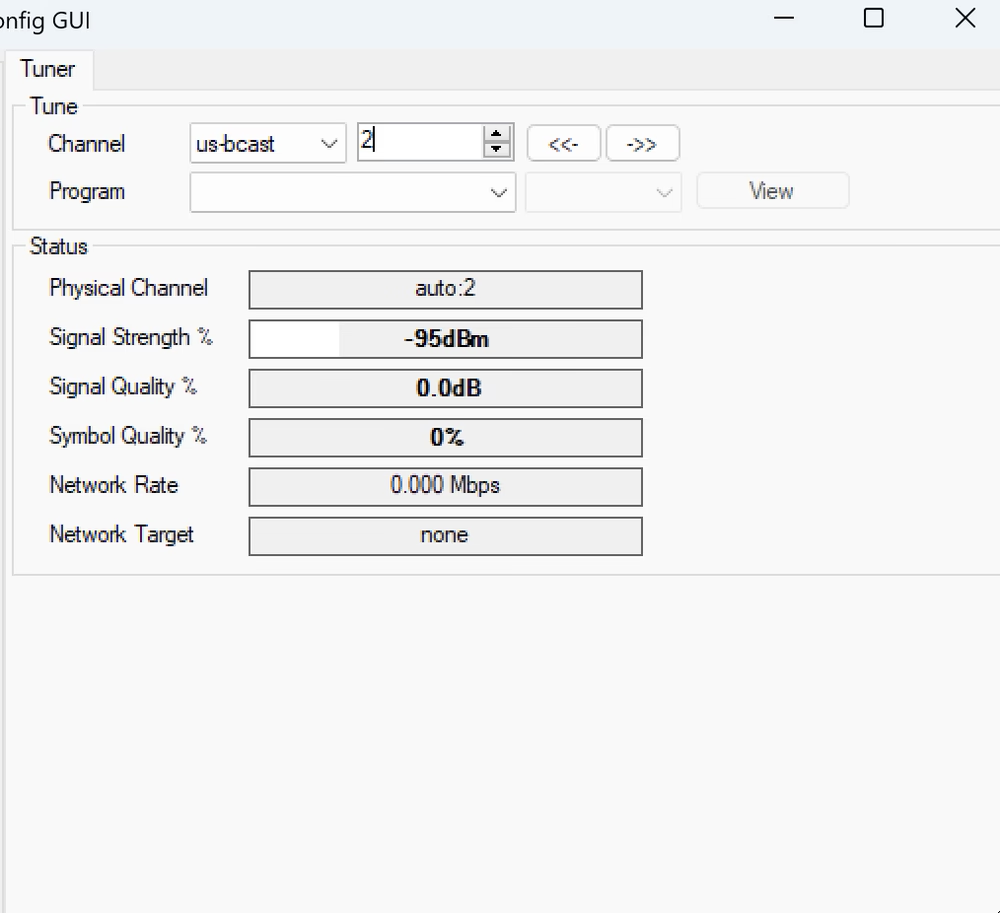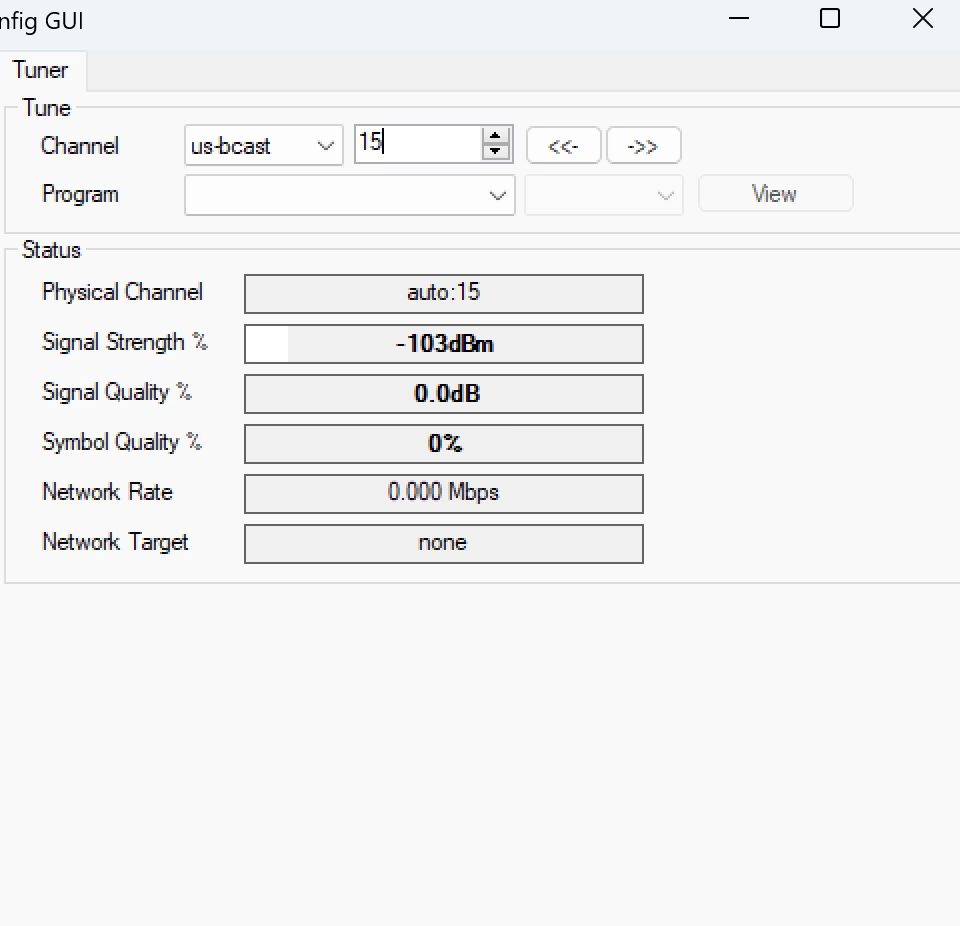Opinion: Lo-VHF Should Be Mandated To Switch To ATSC 3.0 First
By Dylan Ross • February 3, 2024 | Last Updated March 9, 2025

ATSC 3.0 has the potential to drastically help the reception of stations operating on RF channels 2-6.
First, why is Lo-VHF so hard to receive in the first place?
The noise floor on the Lo-VHF band is incredibly high in most places, due to interference from a plethora of sources, most notably from cheap electronics. This subsequently lowers the SNR (the ratio between noise and signal coming in) of Lo-VHF stations when they are received.
The FCC acknowledges this problem and states “TV operations on the lower VHF channels 2-6 are subject to a number of technical penalties, including higher ambient noise levels due to leaky power lines, vehicle ignition systems, and other impulse noise sources and interference to and from FM radio service” (Source: fcc.gov).
Additionally, the website rabbitears.info has a page called “VHF Nightmares” that shows the countless requests to move from VHF to UHF because of how bad ATSC 1.0 functions in the VHF band. (Source: rabbitears.info).
Here’s the difference between an unused UHF channel and an unused Lo-VHF RF channel in my apartment in Miami, FL:
 Lo-VHF, RF Channel 2 Noise Floor: -95 dBm
Lo-VHF, RF Channel 2 Noise Floor: -95 dBm
 UHF, RF Channel 15 Noise Floor: -103 dBm
UHF, RF Channel 15 Noise Floor: -103 dBm
As you can see, the Lo-VHF channel’s noise floor is 8 dBm more than the UHF RF channel’s noise floor. In practical terms, this means:
If both stations were coming in at -85 dBm, the UHF station would have an SNR of 18 dB, while the Lo-VHF station would have an SNR of 10 dB. For ATSC 1.0, the minimum SNR to receive a station is 15.2 dB. This means the UHF station is coming in perfectly fine, while the Lo-VHF station is no where near coming in.
This is an all too real scenario across the country with stations that operate on the Lo-VHF band.
It’s not just the noise floor. It’s the antenna required too
Lo-VHF’s wavelengths are massively long. This means for ideal reception, a massive antenna with long elements is required. The problem is, most people do not have, nor do they want, a ginormous antenna. This means—when individuals use smaller antennas—the received signal from a given Lo-VHF station is incredibly low, exacerbating the Lo-VHF reception problem even more.
ATSC 3.0 could be a savior to the Lo-VHF band
ATSC 3.0 has a wide variety of modulation and code rate configurations. One of the hallmarks of ATSC 3.0 is its ability to broadcast TV channels—and any other internet protocol (IP) data—at or below the noise floor. This means your SNR could be negative (there is more noise than signal), and the station would come in perfectly fine. These are the following modulation and code rates, along with other signal characteristics, that allow for a receive SNR at or below the noise floor:
*Ricean fading is used for SNR calculations
An ATSC 3.0 PLP taking up all time resources with the following configurations:
16-NUQAM 3/15, FFT 16K, LDPC64800, GI1_192, SP32_4, SPB5: 0.5dB SNR Rice, ~4.5 Mbps
64-NUQAM 2/15, FFT 16K, LDPC64800, GI1_192, SP32_4, SPB5: 0.5dB SNR Rice, ~4.5 Mbps
QPSK, 6/15, FFT 16K, LDPC64800, GI1_192, SP32_4, SPB5: 0.2dB SNR Rice, ~4.5 Mbps
QPSK, 5/15, FFT 16K, LDPC64800, GI1_192, SP32_4, SPB5: -1.0dB SNR Rice, ~3.7 Mbps
16-NUQAM 2/15, FFT 16K, LDPC64800, GI1_192, SP32_4, SPB5: -2.0dB SNR Rice, ~3.0 Mbps
QPSK 4/15, FFT 16K, LDPC64800, GI1_192, SP32_4, SPB5: -2.2dB SNR Rice, ~3.0 Mbps
QPSK 3/15, FFT 16K, LDPC64800, GI1_192, SP32_4, SPB5: -3.6dB SNR Rice, ~2.2 Mbps
QPSK 2/15, FFT 16K, LDPC64800, GI1_192, SP32_4, SPB5: -5.5dB SNR Rice, ~1.5 Mbps
Definition of terms:
QPSK: Quadrature Phase Shift Keying
16-NUQAM: 16-Non Uniform Quadrature Amplitude Modulation
x/15: Code Rate (ex. 2/15 means 2 useful bits and 13 redundant bits)
FFT 16K: 16,000 Fast Fourier Transform Samples (Options are 8K, 16K, and 32K. Slightly more data can be sent, and multipath immunity increases with higher FFT samples, at the cost of computational resources)
GI: Guard Interval (This determines how immune to multipath interference a PLP is. GI1_192 is the least immune, GI12_4864 is the most immune. The more immune the signal is to multipath, the lower the data rate can be)
LDPC64800: Low Density Parity Check 64,800 bits (There are 2 options: 64800 bits and 16200 bits. 64800 bits allows for a lower minimum receive SNR)
SP32_4: Scattered Pilot Pattern (Used to understand the RF channel's characteristics to combat distortion and interference. Ranges from SP3_2 to SP32_4. The higher the Scattered Pilot Pattern, the lower the minimum receive SNR and pilot overhead % is. Data rate improves with a higher scattered pilot pattern, but multipath immunity decreases)
SPB5: Scattered Pilot Boost of 5 (5 is the highest you can raise the amplitude of the data carriers to make a PLP have an even lower minimum receive SNR)
What this means practically
Any loss in data rate as a side effect of using a more robust modulation and code rate can be mitigated by using more modern and efficient coding, such as VVC/H.266 for video, or xHE-AAC for audio. The quality of the audio and video could be configured in a way to keep the visual and acoustic quality the same or very similar.
Take “TDM, QPSK 2/15, FFT 16K, LDPC64800, GI1_192, SP32_4, SPB5: -5.5dB SNR Rice, ~1.5 Mbps” for example. With VVC/H.266 and xHE-AAC, you could have 1 decent quality 1080p channel with stereo audio and 1 480p channel with stereo audio fit in that 1.5 Mbps. The signal would be so robust, that it could be received nearly 6dB below the noise floor!
The FCC needs to intervene
I believe the FCC should mandate stations currently operating on RF channels 2-6 to switch over to ATSC 3.0. I also believe the FCC should require these stations to have a minimum SNR at or below the noise floor. Additionally, a rule prohibiting DRM on free channels should be a prerequisite.
This may sound invasive, but how can stations operating on the Lo-VHF band serve the public interest if almost nobody can receive them? The Lo-VHF band is like an abandoned shopping mall with a few struggling stores left in it. The mall is sitting on valuable land; the Lo-VHF band contains 30 MHz of perfectly usable bandwidth (land) that is going to waste. It’s time to revitalize Lo-VHF.
If broadcasters and the FCC won’t budge, then who will?
If broadcasters don’t implement stations with this robust of a signal, and the FCC does nothing about it, then I feel like it is my obligation to show what can be done in the Lo-VHF band with robust ATSC 3.0 implementations. I may have to become a broadcast station owner in the future, if there is an opening and if my monetary situation allows it. Additionally, the idea that there isn’t enough data capacity in robust implementations is simply false, given the emergence of more sophisticated video coding like VVC/H.266. In a YouTube Short, I proved that heavily compressed 540p video encoded in VVC/H.266 can be as low as 42 Kilobits per second and still be watchable. It should be noted that as of the time of writing, Versatile Video Coding is a candidate standard for ATSC 3.0.
*Edit in March 2025: VVC/H.266 is now a full-fledged standard for video coding with ATSC 3.0 in standard "A/345": A/345:2025-02, “VVC Video”, approved 10 February 2025). The fact that VVC is now officially part of ATSC 3.0 should hopefully push broadcasters to create, and device manufacturers to support, VVC broadcasts going forward.*
The FCC once stated “…man-made noise on low VHF is caused by devices such as hair dryers, computers, microwave ovens and similar appliances and that the interference can be addressed by making sure such devices are turned off when someone is watching television” (Source: fcc.gov).
Currently, Lo-VHF TV stations are primarily using an OTA TV broadcast standard from the mid 1990s. It’s 2024, and times have changed. You are no longer inconveniencing yourself with dial-up internet, yet you still have to inconvenience yourself when you want to use the public airwaves.
Is this truly in the interest of the public?
I shouldn’t have to turn off my lights to watch TV.
Like this article? Consider donating. Thanks for helping me keep this website ad-free.

